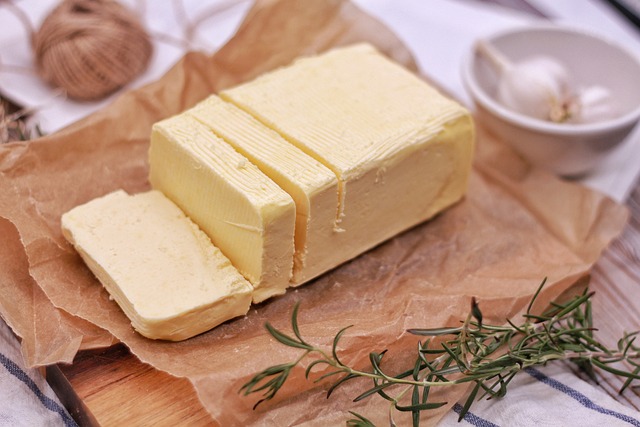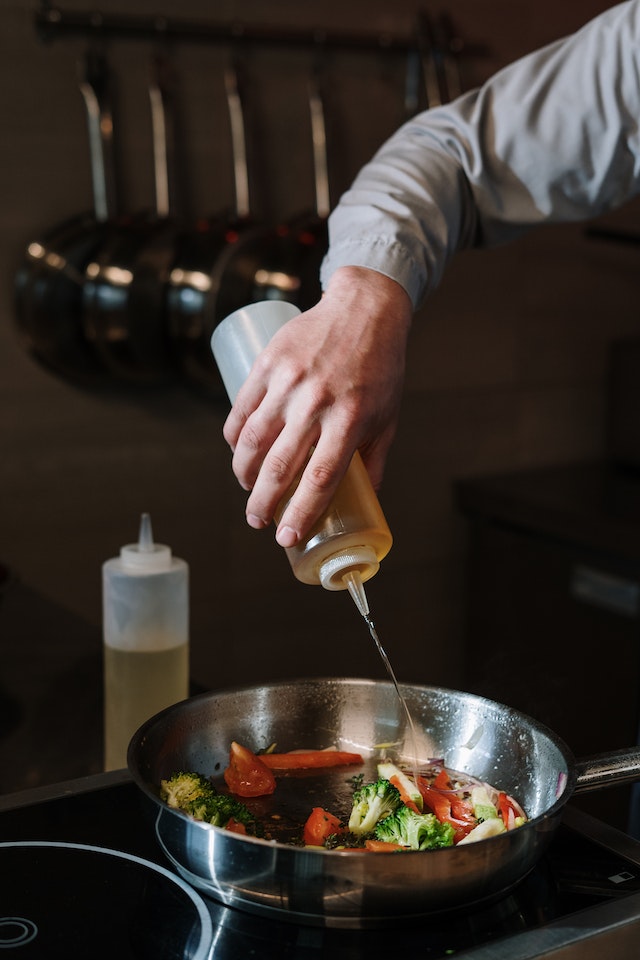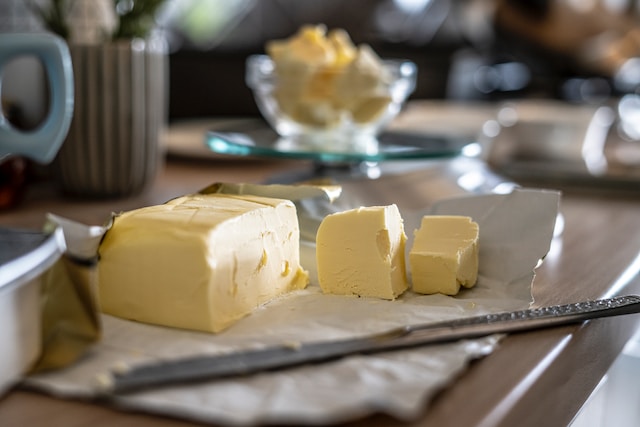
Oils & fats – the unsung heroes of the culinary realm. While their presence may not always be noticed, it is their behind-the-scenes work that holds the power to transform ordinary ingredients into gastronomic delights. In the kitchen, oils and fats play a vital role, not just in enhancing flavors, but also in ensuring textures, promoting tenderness, and delivering that sought-after sizzle.
It’s even possible to make healthy meals with oils and fats, as long as you use them sparingly and carefully.
These essential commodities act as a medium through which heat is spread, allowing us to cook our favorite meals to perfection. By understanding the different properties and characteristics of various oils and fats, we unlock a world of culinary possibilities.
While oils and fats seem to be synonymous, they are actually two distinct entities. Oils are derived from plant sources such as olives, sunflowers, or sesame seeds, and remain in liquid form even at room temperature. On the other hand, fats are commonly derived from animal sources or solid plant-based substances, such as butter or coconut oil, and solidify when cooled.
Both oils and fats contribute a unique depth to dishes as they lubricate and moisten ingredients, imparting richness and succulence. Their ability to conduct heat efficiently ensures even cooking, creating a harmonious symphony of flavors.
In the kitchen, each oil and fat carries its own culinary persona. Olive oil, with its fruity and robust nature, takes the lead in Mediterranean cuisine, while sesame oil dances gracefully in Asian stir-fries, imparting a distinctive nutty aroma. Meanwhile, butter boasts a creamy texture and a nuanced flavor that adds warmth and indulgence to baked goods and sauces.
Beyond their flavor profiles, oils and fats also offer health benefits when used judiciously. Choosing heart-healthy options such as avocado oil, which is rich in monounsaturated fats, or incorporating omega-3 fatty acids through flaxseed oil, can elevate the nutritional value of our meals.
As we embark on this exploration of oils and fats, let us embrace their utilitarian nature and appreciate their ability to elevate our culinary creations. From sautéing to baking, our culinary journey thrives on their subtle nuances that silently transform a dish from ordinary to extraordinary.
Types of Culinary Fats
In the world of cooking, culinary fats come in a diverse array of forms and flavors, each offering its own unique qualities and applications. From butter to lard, here are some of the most commonly used types of culinary fats:
- Butter
Butter, made from churning cream, has long been revered for its rich, creamy texture and distinctive flavor. Its ability to add depth and complexity to both sweet and savory dishes makes it a staple in many kitchens. From spreading on toast to using it as a base for sauces and pastries, butter’s versatility knows no bounds.
- Vegetable Oils
Derived from plants such as soybeans, sunflowers, canola, and safflowers, vegetable oils provide a neutral taste and high smoking points. Due to their stability under high heat, vegetable oils are excellent for frying, stir-frying, grilling, and baking. They are often used as a base for salad dressings, marinades, and as a cooking medium in various cuisines.

- Olive Oil
Olive oil remains an iconic ingredient in Mediterranean cuisine, renowned for its distinct fruitiness and health benefits. Extra-virgin olive oil is a top choice for salads, dressings, and drizzling over finished dishes to enhance flavors. Refined olive oils are great for sautéing and light frying, as they can withstand higher temperatures.
- Coconut Oil
Extracted from the meat or kernel of mature coconuts, coconut oil lends a rich, tropical aroma to dishes. Its high saturated fat content solidifies when chilled, making it an ideal choice for baking and frying. With its unique flavor, coconut oil adds a delightful touch to curries, smoothies, and baked goods.
- Animal Fats
Animal fats, such as lard and duck fat, have a long-standing tradition in many culinary cultures. Lard, made from pig fat, is valued for its ability to create flaky crusts in baking and impart a rich flavor in savory dishes. Duck fat, with its distinct taste and high smoking point, is often used in French cuisine to elevate roasted meats and potatoes.
When selecting culinary fats, it’s essential to consider their smoking points, stability under heat, and desired flavors. Each type of fat offers its own unique characteristics, allowing for endless creativity in the kitchen. By embracing the world of culinary fats, we can unlock a whole new realm of taste and texture in our cooking endeavors.
Cooking with Oils and Fats
Oils and fats are the backbone of culinary delight, providing the necessary lubrication and flavor to dishes. Understanding how to use them effectively in cooking is essential for achieving optimal results. Let’s delve into the art of cooking with oils and fats, exploring various techniques and considerations for bringing out the best in every dish.
Choosing the Right Oil or Fat
When it comes to cooking with oils and fats, choosing the right one for the job can make all the difference. Consider the following factors to ensure the best outcome:

Smoke Point: Each oil and fat has a specific smoke point, which is the temperature at which it starts to break down and emit smoke. Using an oil beyond its smoke point can result in a burnt and unpleasant flavor, as well as the production of harmful compounds. High smoke point oils, like avocado or grapeseed oil, are excellent choices for high-heat cooking methods such as frying, grilling, or searing. For gentler heat methods, like sautéing or baking, oils with medium smoke points, such as coconut or olive oil, work well.
Flavor Profile: Different oils and fats have distinct flavors that can greatly influence the taste of your dish. Consider how the flavor will complement or enhance your ingredients. For example, the richness of butter can be a game-changer in creamy sauces and baked goods, while the nutty aroma of sesame oil adds an authentic touch to Asian stir-fries.
Cooking Techniques with Oils and Fats
Sautéing: Sautéing involves quickly cooking ingredients in a shallow pan with a small amount of oil or fat over medium-high heat. This technique works well for vegetables, meats, and seafood, allowing them to retain their moisture and develop a delicious golden crust. Start by heating the oil or fat in the pan, then add your ingredients, stirring or flipping them constantly to ensure even cooking.
Frying: Frying is a technique where food is submerged in hot oil or fat, resulting in a crispy exterior and a moist interior. There are two types of frying: shallow and deep. Shallow frying is ideal for foods like pancakes or shallow-fried chicken, where the oil only covers the base of the pan. For deep frying, where food is completely submerged, it is important to choose an oil with a high smoke point and monitor the temperature closely.
Roasting: Roasting involves cooking food in an oven at high heat, typically with the addition of oil or fat. This technique is popular for vegetables, meats, and poultry, as it brings out their natural flavors while adding a delightful caramelization. Coat the ingredients with a thin layer of oil or fat, ensuring they are evenly coated, then place them in a preheated oven.
Baking: Baking is a method commonly used for cakes, pastries, and bread. Butter, shortening, and coconut oil are popular fats used in baking due to their ability to provide structure, moisture, and flavor. Creaming the fat with sugar is often the first step in creating a light and fluffy result, as it incorporates air into the mixture.
Oils and Fats in Baking
In the realm of baking, oils and fats play a crucial role in determining the texture, structure, and flavor of our creations. Whether it’s a flaky pie crust, a moist cake, or a delectable cookie, the choice of oils and fats can elevate our baked goods from ordinary to extraordinary. In this section, we will explore the different types of oils and fats commonly used in baking, their unique characteristics, and how to incorporate them effectively into our recipes.
Butter
When it comes to baking, few ingredients have the power to transform a recipe quite like butter. Its rich, creamy texture and distinctive flavor make it a top choice for creating tender and flavorful baked goods. Whether we’re making cookies, cakes, or pastries, butter adds depth and indulgence to our creations.
Embrace the magic of butter by creaming it with sugar to create air pockets, resulting in a light and fluffy texture in cakes and cookies. In pie crusts and biscuits, the cold, solid form of butter helps create a flaky and tender texture.

Vegetable Oils
Vegetable oils, such as canola, soybean, or sunflower oil, are often used in baking due to their neutral taste and high smoke points. These oils provide moisture, tenderness, and a delicate crumb to our baked goods. They are particularly useful in recipes that call for liquid fats, as they seamlessly blend with other ingredients and ensure a moist and soft texture. When substituting vegetable oil for solid fats like butter, keep in mind that the ratio may need adjustment to maintain the proper texture and structure of your baked goods.
Coconut Oil
The tropical aroma and unique flavor of coconut oil bring a delightful touch to our baking endeavors. In recipes that can benefit from a subtle hint of coconut, such as cookies, muffins, or quick breads, coconut oil adds a gentle sweetness and moisture. Coconut oil is solid at room temperature, so it can be used as a replacement for butter or other solid fats in recipes that require cutting the fat into the dough.
Olive Oil
While olive oil is commonly associated with savory dishes, it can also be used to enhance the flavor and texture of certain baked goods. Extra-virgin olive oil, with its fruity and rich taste, works well in recipes that call for a distinct olive oil flavor.
This includes focaccia bread or olive oil cake. It provides moisture and a subtle depth of flavor, resulting in a delightful and unique twist to your baked creations. Refined olive oils with milder flavors can be used in baking applications where a more neutral taste is desired.

Shortening
Shortening, a solid fat made from hydrogenated vegetable oils, is often preferred in specific baking applications, such as pie crusts or biscuits, where a flaky and tender texture is desired. Its high melting point allows for a longer-lasting structure, resulting in extra fluffiness and a crumbly pastry. However, shortening lacks the distinct flavor of butter, so it is recommended to combine it with other fats or ingredients to ensure a desirable taste profile.
Oils and fats are the unsung heroes of the culinary world. Their role in the kitchen goes beyond adding flavor – they contribute to the texture, tenderness, and overall success of our dishes. From the rich creaminess of butter to the fruity robustness of olive oil, each oil and fat has its own unique persona in the culinary realm. Whether sautéing, frying, roasting, or baking, oils and fats are indispensable ingredients that elevate our dishes from ordinary to extraordinary.
